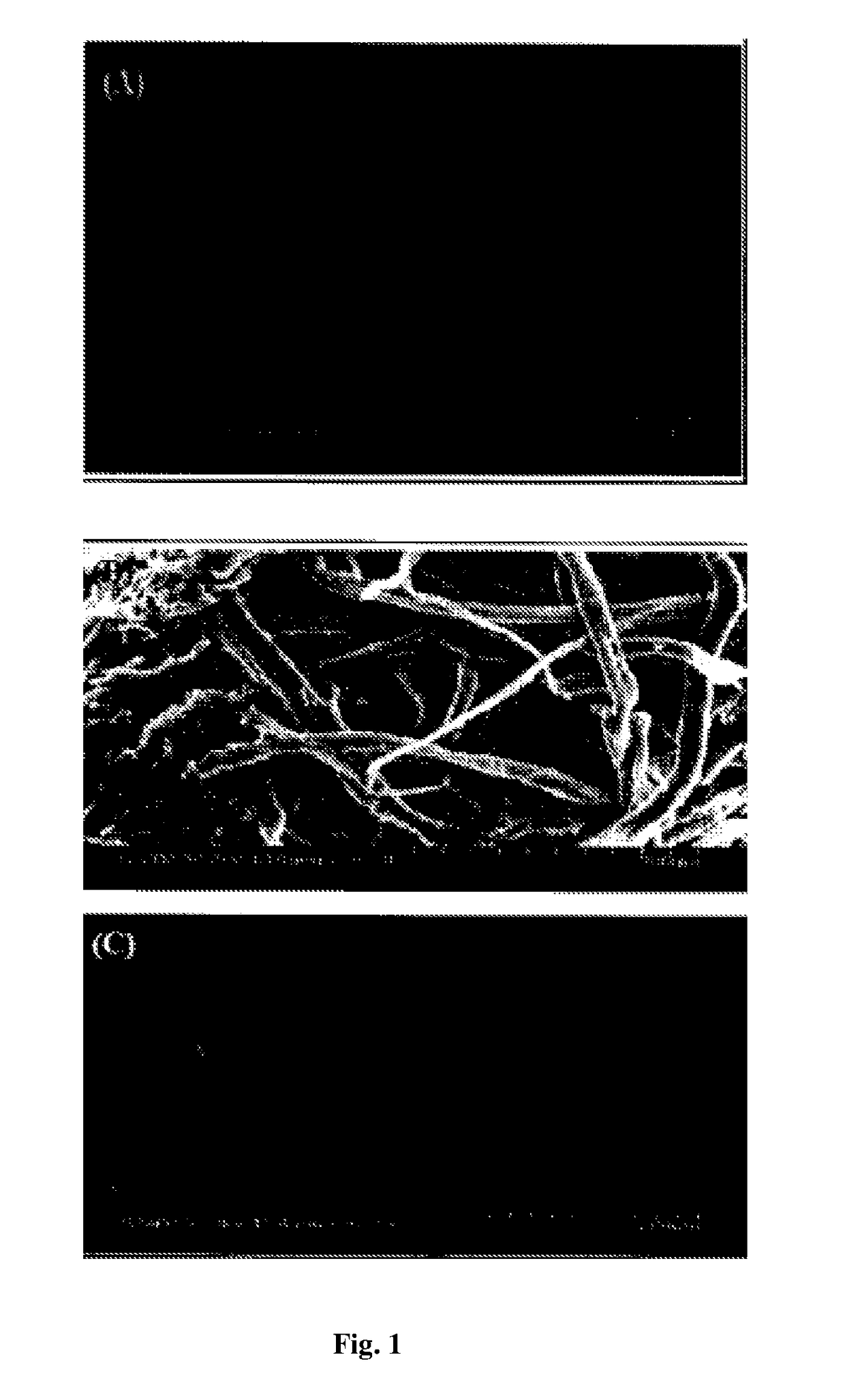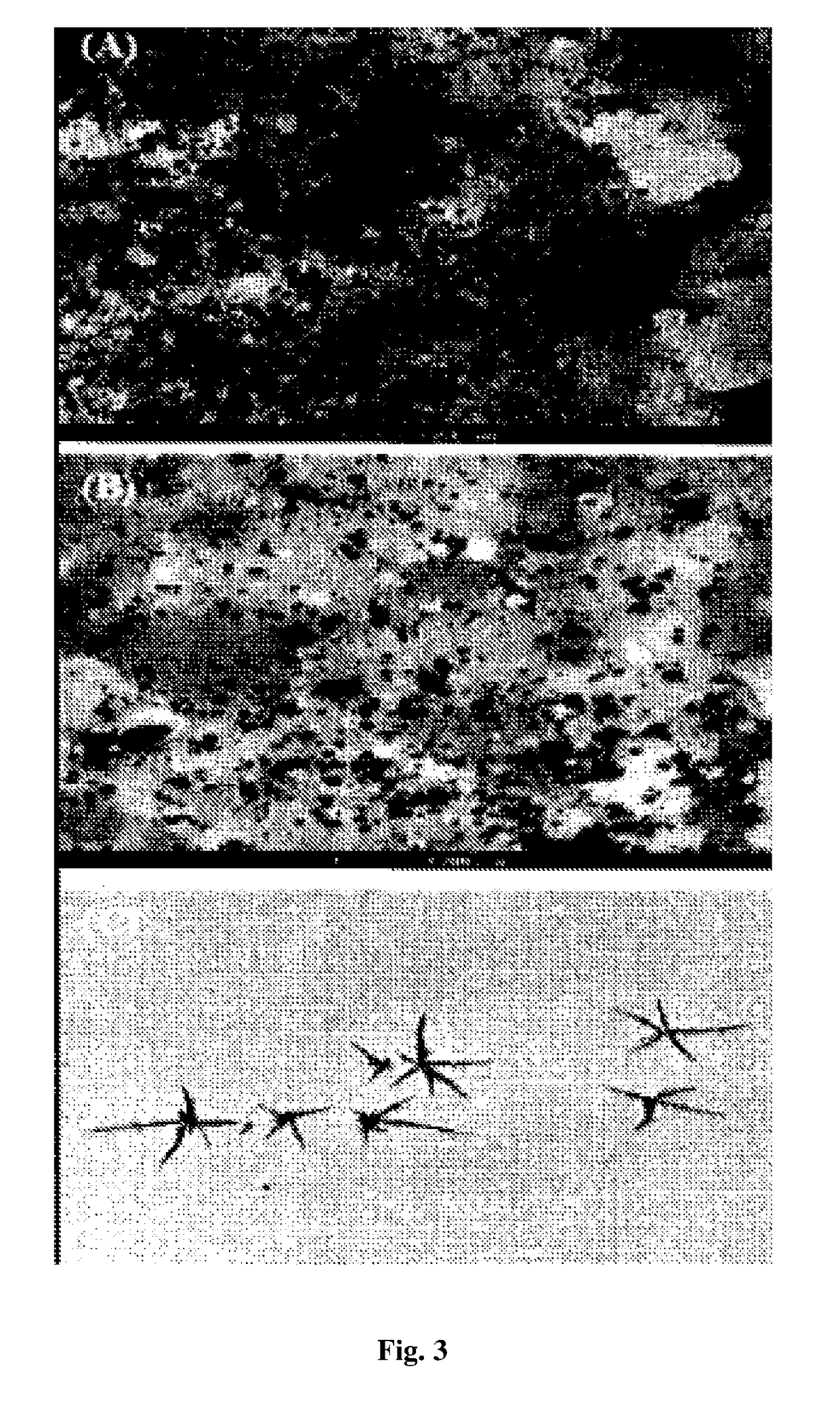A nanobiocomposite formulation for wound healing and a process for the preparation thereof
a technology of nanobiocomposite and wound healing, applied in the direction of antibacterial agents, drug compositions, aerosol delivery, etc., can solve the problems of affecting wound healing, affecting wound healing, and difficulty in treating wounds,
- Summary
- Abstract
- Description
- Claims
- Application Information
AI Technical Summary
Benefits of technology
Problems solved by technology
Method used
Image
Examples
example 1
[0056]Chemical Pre-Treatment of S. cumini Leaffor the Isolation of CNCs
[0057]Washed, air dried and small fragmented S. cumini leaves (4 g) treated with 50 ml of bleaching agent i.e. 3 wt % sodium chlorite solution (01=3.5) for 3 h at 80° C. The fibrous material was filtered and washed with distilled water and again treated with acidified 3% sodium chlorite solution (pH=3.5) at room temperature of 25±2° C. overnight (16-18 h) under stirring. Washing step was repeated as above. The material was then put into each of 3% KOH and 5% KOH for 2 h each at 80° C. under stirring. Again the fibrous material was treated with 3% sodium chlorite solution for 1 h at 80° C. Filtration and washing procedure was repeated after every treatment. The fiber at this stage was designated as chemically treated fiber.
[0058]The fiber at this stage was characterized for size and shape by SEM imaging. The chemical functional groups present in the untreated fiber were determined by FT-1R spectroscopy. To measure...
example 2
Isolation of CNCs by Acid Hydrolysis and Mechanical Treatment
[0059]The chemically pre-treated fiber was treated with 65% (v / v) sulfuric acid (1:9) for 1 h at 45° C. under constant stirring. The material was centrifuged and dialyzed against tap water to remove the acid content until neutral. The fibers at this stage were regarded as cellulose nanocrystals, CNCs. After chemical treatment, CNCs were given mechanical treatment using ultra probe sonication for 4, 8, 12, 20 and 30 min to individualize the fibers and to study the effect of sonication on the length of fibers. CNCs obtained were characterized and freeze dried to obtain white solid CNCs.
example 3
Characterization of CNCs Using TEM, XRD, FT-IR, and Zeta Potential
[0060]CNCs were observed for shape and size estimation using TEM. The sample was mounted on copper grid, stained with uranyl acetate (3 wt %) and then washed with distilled water. The grid containing sample was allowed to air dry. Then the images were captured at desired magnification.
[0061]X-ray diffraction analysis was carried out to calculate the crystallinity index of nanocellulose. FT-1R analysis was done by forming the sample pellet with dry K13r. The spectrum was recorded at transmission of 4000-400 cm-1 to assure the presence of chemical functional groups that define the structure of cellulose.
[0062]Zeta potential measurements were carried out in disposable cuvettes on Zeta sizer Nano ZS to examine the surface charge on CNCs.
PUM
| Property | Measurement | Unit |
|---|---|---|
| Temperature | aaaaa | aaaaa |
| Temperature | aaaaa | aaaaa |
| Temperature | aaaaa | aaaaa |
Abstract
Description
Claims
Application Information
 Login to View More
Login to View More - R&D
- Intellectual Property
- Life Sciences
- Materials
- Tech Scout
- Unparalleled Data Quality
- Higher Quality Content
- 60% Fewer Hallucinations
Browse by: Latest US Patents, China's latest patents, Technical Efficacy Thesaurus, Application Domain, Technology Topic, Popular Technical Reports.
© 2025 PatSnap. All rights reserved.Legal|Privacy policy|Modern Slavery Act Transparency Statement|Sitemap|About US| Contact US: help@patsnap.com



